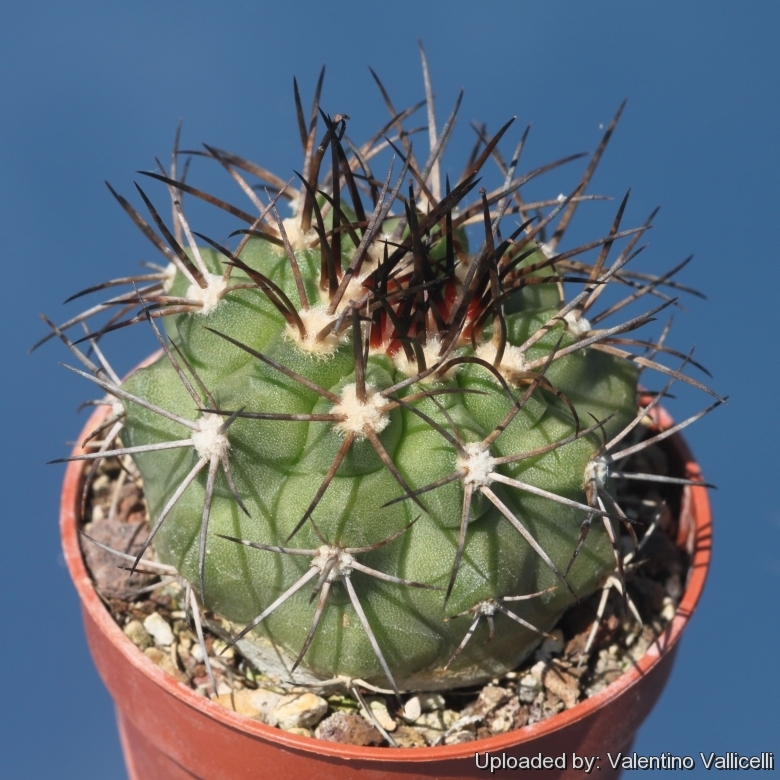Donate now to support the LLIFLE projects.
Your support is critical to our success.
Your support is critical to our success.
= Copiapoa cupreata (Poselg. ex Rümpler) Backeb.
Cactaceae (Backeberg) 3: 1920. 1959 (Cactac. Handb. Kakteenk.) Backeb.
Accepted Scientific Name: Copiapoa echinoides (Lem.) Britton ex Rose in Britton & Rose
Cactaceae (Britton & Rose) 3: 88, fig. 100. 1922 Britton & Rose

Echinocactus cupreatus (Copiapoa cupreata) Photo by: Valentino Vallicelli
KK 1382 (Collector: Karel Kníže)Vallenar, Chile, 800m.
KK 1382 (Collector: Karel Kníže)Vallenar, Chile, 800m.
Synonyms:
- Copiapoa cupreata (Poselg. ex Rümpler) Backeb.
- Echinocactus cupreatus Poselg. ex Rümpler
- Hildmannia cupreata (Poselg. ex Rümpler) Kreuz. & Buining
- Neoporteria tuberisulcata var. cupreata (Poselg. ex Rümpler) Donald & G.D.Rowley
See all synonyms of Copiapoa echinoides
back
Accepted name in llifle Database:Copiapoa echinoides (Lem.) Britton ex Rose in Britton & Rose
Cactaceae (Britton & Rose) 3: 88, fig. 100. 1922
Synonymy: 14
- Copiapoa echinoides (Lem.) Britton ex Rose in Britton & Rose
- Echinocactus echinoides Lem. ex Salm-Dyck
- Copiapoa bridgesii (Pfeiff.) Backeb.
- Copiapoa marginata var. bridgesii (Pfeiff.) A.E.Hoffm.
- Echinocactus bridgesii Pfeiff.
- Copiapoa cupreata (Poselg. ex Rümpler) Backeb.
- Echinocactus cupreatus Poselg. ex Rümpler
- Hildmannia cupreata (Poselg. ex Rümpler) Kreuz. & Buining
- Neoporteria tuberisulcata var. cupreata (Poselg. ex Rümpler) Donald & G.D.Rowley
- Copiapoa dura F.Ritter
- Copiapoa echinoides var. cuprea (F.Ritter) A.E.Hoffm.
- Copiapoa cuprea F.Ritter
- Copiapoa macracantha (Salm-Dyck) Mereg.
- Echinocactus macracanthus Salm-Dyck
back
| Your Actions | |
|---|---|
| Back to Echinocactus index | |
| Back to Cactaceae index | |
 |
Back to Cacti Encyclopedia index |








